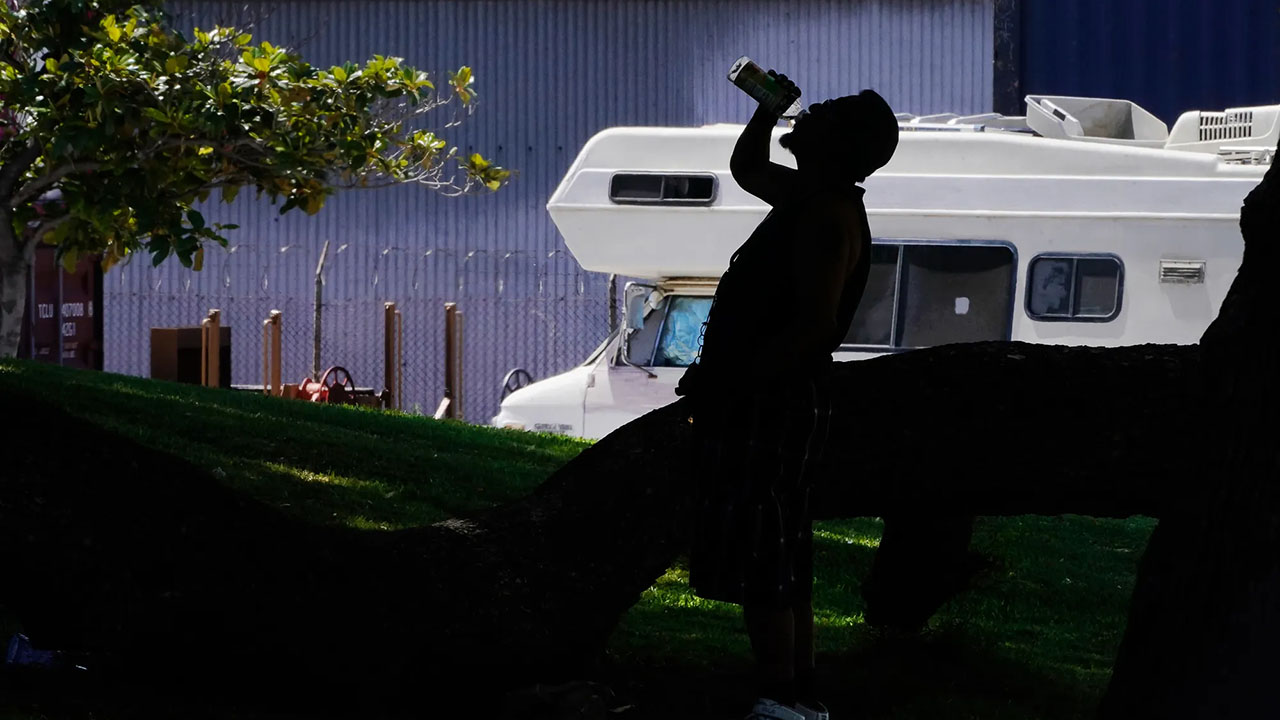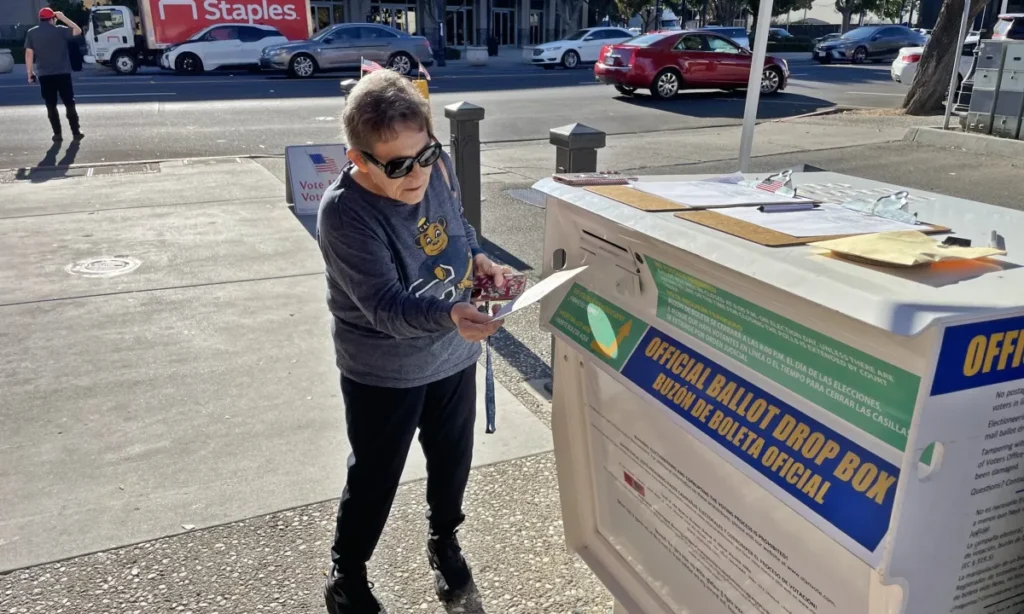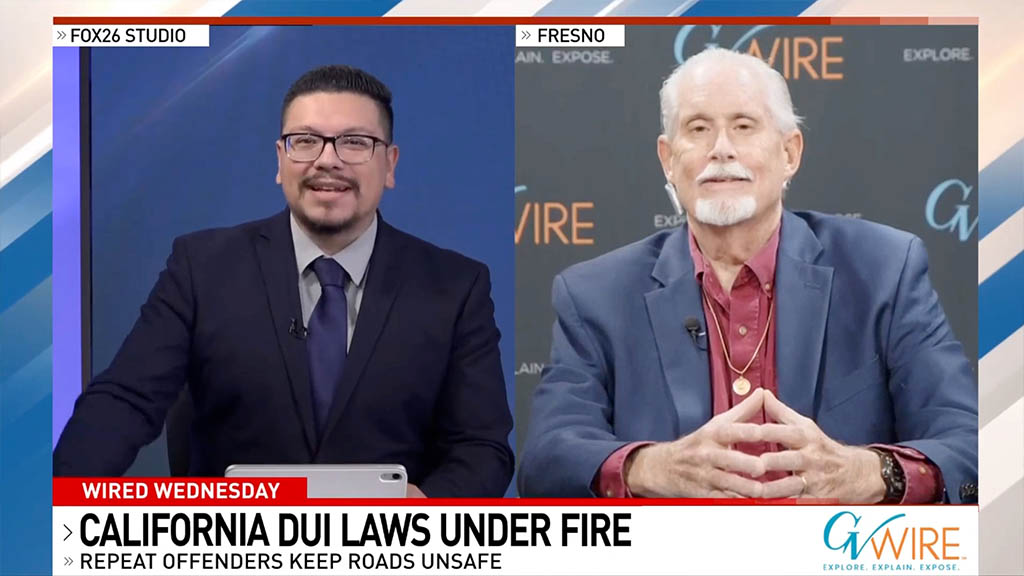Heat waves have killed hundreds of Californians and cost billions of dollars in the past decade, according to a new report from the state insurance department. (AP/Damian Dovarganes)

- The report estimates nearly 460 deaths from extreme heat events, surpassing the state's deadliest wildfires.
- The economic impact of these events total $7.7 billion, including lost wages and infrastructure damage.
- The report also highlights the disproportionate effects of extreme heat on low-income communities and minority groups.
Share
|
Getting your Trinity Audio player ready...
|
A blistering California heat wave over the past week and through the Fourth of July holiday could be topped off by the hottest temperature ever recorded on Earth. That kind of extreme heat has led to more deaths than wildfires and costs billions of dollars over a decade, according to the state insurance department.

Levi Sumagaysay
CalMatters
Following through on a mandate from 2022, a new report from the department looked at seven extreme heat events in the state from 2013 to 2022 and found they took the lives of several hundred Californians.
The events also had a total economic impact of $7.7 billion in the form of lost wages and productivity, agricultural and manufacturing disruptions, power outages, infrastructure damage, and more.
The state’s top 20 deadliest wildfires, dating back to 1933, killed a total of 312 people. The death toll from the extreme heat events identified by the Insurance Department was higher — estimated at nearly 460 in a first-of-its-kind report the department released last week. And it is likely that the toll was actually greater, at nearly 4,000 in a decade, a 2019 Los Angeles Times analysis showed.
Michael Mendez, an assistant professor of environmental planning and policy at UC Irvine and author of “Climate Change from the Streets,” agreed that the toll is most likely higher, because extreme heat’s effects can be hard to designate and quantify.
Related Story: Searing Heat Wave Grips Large Parts of the US and Causes Deaths in the West
“It’s really important to understand that heat is a silent killer,” Mendez said. Yet extreme heat “requires the same amount of speed in action that large disasters get, such as wildfires,” he added.
One of the main goals of the report is to provide data that can help inform and lead to action by policymakers, governments, businesses. and the insurance industry.
There is little to no insurance coverage available for some effects and costs of extreme heat, such as lost wages for workers, power outages for residents and businesses, and damage to railways, according to the report.
Insurance Commissioner Ricardo Lara and the department are under pressure to tackle the insurance availability and affordability issues that have plagued the state because some insurers have stopped renewing or writing new homeowner policies here, citing wildfire risk as a big factor.
The report also follows years of warnings about extreme heat and other effects of climate change by other state entities, such as the Legislative Analyst’s Office, and lawmakers’ efforts to address them.
The 92-page report, which assesses the insured and uninsured costs of heat and recommends quick action and changes, was mandated by a bill Lara sponsored that was signed into law in 2022, whose main goal was to establish an extreme heat ranking system. That system, CalHeatScore, is being developed now by the state Environmental Protection Agency with help from other state agencies, and is set to roll out next year.
The effects of extreme heat are disproportionately borne by low-income communities, older adults and outdoor workers, the report also found. Black, Native American, and Hispanic Californians had the highest rates of deaths, respectively, compared with Asian and white California residents, during the events examined by the report. That’s why the report’s authors — the Insurance Department, with input from the state’s Climate Insurance Working Group, and a consultant it hired to produce the report — call for equity when thinking about extreme heat policies and programs by considering the needs of vulnerable populations, including elderly people living alone, and outdoor and indoor workers.
Besides the hundreds of deaths, the report showed that extreme heat resulted in more than 5,000 hospitalizations, almost 10,600 emergency department visits, more than 138,000 outpatient visits. and nearly 344 adverse birth outcomes.
Kathy Baughman McLeod is chief executive of Climate Resilience for All, a global non-governmental organization dedicated to addressing extreme heat for vulnerable communities. She is part of the working group and said the data from this new report could be used to help with the “normalization of insurance products related to heat.”
“We could use this data to create forecast-based insurance products that pay out when the forecast for the heat wave comes,” she said.
Baughman McLeod would know — she has worked with insurers on creating new insurance products, such as insurance that helps replace women’s income in India when they’re unable to work on extremely hot days because the products they sell might spoil or their work hours are reduced. She also helped create insurance for coral reefs in Mexico.
Meanwhile, the effects of extreme heat on health and life insurance are not known yet. Adrita Bhattacharya-Craven, director of health and demography at global insurance think tank The Geneva Association, said the Insurance Department’s findings align with some of her organization’s findings on health, climate, and insurance, especially the disproportionate effects on the elderly and vulnerable populations. She said there is hardly any climate-sensitive data on mortality or morbidity when processing insurance claims, except for deaths from wildfires or possibly extreme heat.
Related Story: PG&E Warns of Possible Outages in Extreme Fresno Heat Wave
“For example, a medical professional is likely to report a stroke as just a stroke, without specifying that it was induced by prolonged heat exposure,” Bhattacharya-Craven said. “There are no tools to consistently capture such information right now… In the long run, we need to map vulnerability with more granularity.”
Other main recommendations in the report:
- Expand investment in planning for disasters, as well as use existing state and federal funding to prioritize efforts such as strengthening infrastructure against extreme weather, and restoring access to trees and green spaces.
- Encourage strategies to try to reduce heat-related illnesses and injuries for workers across sectors. That includes incentivizing businesses to “meet benchmarks above the minimum indoor and outdoor temperature standards” set by governments.
- Improve tracking costs of planning for extreme heat events.
The report also recommends the planting of more trees, which could help provide shade, help health outcomes, reduce energy needs and more. It also calls for cooling systems for dairy cows — important because California is the largest dairy producer in the nation.
Extreme heat “requires the same amount of speed in action that large disasters get, such as wildfires.”
MICHAEL MENDEZ, ASSISTANT PROFESSOR, UC IRVINE
A few of the recommendations are already happening in some fashion. The state’s Occupational Safety and Health Standards Board recently approved a rule requiring employers to reduce the risk of extreme heat for warehouse, restaurant, and other workers. After a long delay, it’s set to take effect in August. Also last week, the federal OSHA proposed a rule, years in the making, that tells employers how they should protect indoor and outdoor workers from heat when temperatures reach two thresholds: 80 degrees and 90 degrees.
Municipalities such as Los Angeles have programs that help certain residents afford air conditioners, or that break up their utility bills so they’re more manageable, so residents don’t avoid using their air conditioners when needed. Cooling and resilience centers in different parts of the state help people who need relief from the heat.
Related Story: Record-Setting Heat Sets Its Dangerous Aim on Fresno This Week
But Gov. Gavin Newsom last week signed a budget that slashed $107.8 million in funding for programs and projects that address extreme heat, and shifted $55.7 million across different programs. The cuts affect funding and other help for tribal, local and regional entities to establish heat action plans, provide shade, expand green spaces, educate the public about heat, and more.
Some of that funding could be restored through a bond measure proposed by lawmakers for the November ballot that would include raising hundreds of millions of dollars for extreme heat programs.
As extreme heat events become more common, Baughman McLeod said the report’s findings are just a first step. She said the systems around addressing extreme heat aren’t adequate, but that the findings from the report should lead policymakers and others to act with urgency.
“We can’t do this quickly enough,” she said, adding that “the world is watching what California does.”
About the Author
Levi Sumagaysay covers the California economy for CalMatters with an eye on accountability and equity. She reports on the insurance market, taxes and anything that affects the state’s residents, labor force and economy.
About the CalMatters
CalMatters is a nonprofit, nonpartisan newsroom committed to explaining California policy and politics.
RELATED TOPICS:
Categories




















